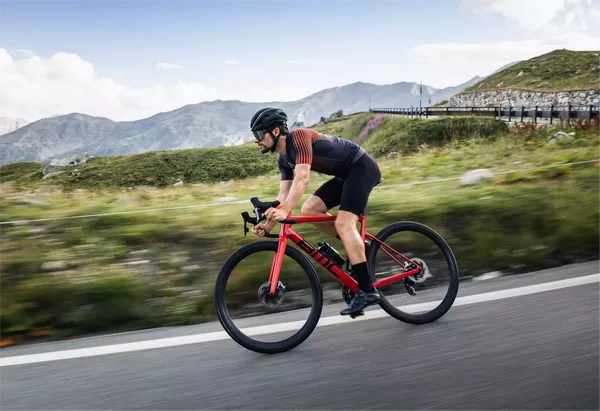Mountain biking is an exhilarating sport that attracts riders of all skill levels. Among the various styles of mountain biking, technical mountain biking stands out for its complexity and challenge. It requires not only physical strength but also a high degree of skill and mental acuity. This article will explore the world of technical mountain biking, delving into its nuances, the skills required, the equipment used, and tips for mastering this demanding sport.
Understanding Technical Mountain Biking
Technical mountain biking involves riding on trails that are rugged and challenging. These trails feature obstacles such as rocks, roots, steep inclines, and narrow paths. Unlike smooth, flowing trails, technical trails demand precise bike handling and quick decision-making. Riders must navigate through tight turns, drop-offs, and unpredictable terrain.
Key Features of Technical Trails
- Rocks and Roots: These natural obstacles are common on technical trails. Rocks can vary in size from small pebbles to large boulders, while roots can create uneven surfaces and slippery conditions.
- Steep Inclines and Declines: Technical trails often include sharp climbs and descents. Riders must be able to maintain balance and control their speed to navigate these sections safely.
- Tight Turns: Narrow, winding paths require riders to make quick, sharp turns. This demands excellent bike handling skills and a keen sense of timing.
- Drop-offs: Sudden changes in elevation, known as drop-offs, are a hallmark of technical trails. Riders must be able to lift their front wheel and control their descent to handle these challenges.
See Also: How to Gain Confidence Mountain Biking
Skills Required for Technical Mountain Biking
To excel in technical mountain biking, riders need a combination of physical fitness, technical skills, and mental focus. Here are some of the key skills:
- Bike Handling: Mastery of bike handling is crucial. Riders must be able to maneuver their bikes precisely, adjusting their body position and weight distribution to maintain balance and control.
- Braking Technique: Proper braking technique is essential. Riders need to know when and how to use their brakes to maintain control without skidding or losing traction.
- Line Choice: Choosing the best line through obstacles is a critical skill. This involves assessing the trail ahead and deciding the safest and most efficient path.
- Body Positioning: Maintaining the correct body position is vital for balance and control. This includes shifting weight forward or backward, standing or sitting, and adjusting the angle of the bike.
- Mental Focus: Technical mountain biking demands intense concentration. Riders must be able to stay focused on the trail, anticipate obstacles, and react quickly to changing conditions.
Essential Equipment for Technical Mountain Biking
The right equipment can make a significant difference in technical mountain biking. Here are some essential items:
- Mountain Bike: A robust mountain bike designed for technical trails is crucial. Look for features such as full suspension, durable frame, and high-quality components.
- Protective Gear: Safety should be a top priority. Wear a helmet, gloves, knee and elbow pads, and other protective gear to minimize the risk of injury.
- Tires: Choose tires with good grip and durability. Wider tires with aggressive tread patterns provide better traction on technical trails.
- Hydration Pack: Staying hydrated is essential. A hydration pack allows you to carry water and other essentials without hindering your movement.
- Repair Kit: Be prepared for mechanical issues. A basic repair kit with tools, spare tubes, and a pump can help you fix common problems on the trail.
Tips for Mastering Technical Mountain Biking
Mastering technical mountain biking takes time and practice. Here are some tips to help you improve:
- Practice Regularly: Consistent practice is key to developing your skills. Spend time on technical trails to get used to the challenges and build your confidence.
- Focus on Fundamentals: Work on fundamental skills such as bike handling, braking, and body positioning. These are the foundation of technical riding.
- Watch and Learn: Observe experienced riders and learn from their techniques. Watching videos or joining group rides can provide valuable insights.
- Start Small: Begin with less challenging trails and gradually progress to more difficult ones. This allows you to build your skills and confidence without getting overwhelmed.
- Stay Relaxed: Tension can hinder your performance. Try to stay relaxed and fluid on the bike, allowing your body to move naturally with the terrain.
- Visualize Success: Visualization can help improve your performance. Picture yourself successfully navigating obstacles and riding smoothly through technical sections.
Conclusion
Technical mountain biking is a thrilling and demanding sport that offers a unique blend of physical and mental challenges. By understanding the key features of technical trails, developing essential skills, and using the right equipment, you can master this exciting discipline. Remember to practice regularly, stay focused, and enjoy the ride. Whether you are a beginner or an experienced rider, technical mountain biking provides endless opportunities for adventure and growth.

